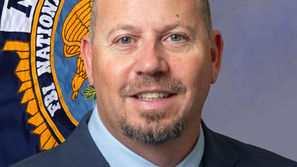Richard Nixon, Madera, and the ‘Checkers Speech’
- Bill Coate
- Mar 23, 2022
- 3 min read

Courtesy of the Madera County Historical Society
Congressman Richard Nixon is seen here campaigning from a station wagon parked on Yosemite Avenue in 1950. He came back to Madera two years later to campaign for Vice President.
Thursday, Sept. 18, 1952, was a big day for both Senator Richard M. Nixon and the City of Madera. It was a presidential election year, and California’s junior senator had been chosen by General Dwight David Eisenhower to be his running mate in the race for the White House.
Everybody was giving the Republican ticket more than an even chance of winning the November contest. For Nixon, it represented the zenith of a mercurial rise to political prominence, and with great excitement, his campaign strategists planned his first public outing: a whistle-stop tour through the Central Valley, one that included Madera.
Carl W. McCollister, the Madera County chairman for the Eisenhower-Nixon Committee, announced that a sizable group of local dignitaries would ride the “Dick Nixon Special” into town and help insure that the young candidate received a warm Madera welcome.
The Nixon train pulled into the Madera Depot at 12:30 p.m., where a crowd of several thousand people pressed forward to greet the senator. Congressman Oakley Hunter introduced Madera Mayor, Al Barsotti who, in turn, introduced Mayor Paul Christoffersen of Chowchilla. Nixon was then introduced by Christoffersen.
Speaking with vigor, despite an annoying hoarseness, Nixon’s theme provided no surprises. “We can have a prosperity based on peace rather than on war; we can have an honest government in Washington, and General Eisenhower is the one who can give us all of that.”
It played well in Madera, and the Tribune reporter who covered the speech declared that Nixon “captured the large Madera crowd...with a logic and sincerity that is winning him friends and influencing people wherever he talks.”
While Nixon was wooing the Madera crowd, however, the enthusiasm outside the train was inversely proportional to the gloom that was clinging to the walls of the inner sanctum in the conference car. None of those assembled at the depot had any idea that a major political storm was brewing that very moment. While Nixon was extolling the virtues of the Republican ticket to the people, inside his advisors were trying to defuse a time bomb.
Jack Drown, Murray Chotiner, Pat Hillings, and William P. Rogers had cause for concern. Their candidate was being accused of benefiting from a “secret slush fund,” and the story would hit the papers any time.
As the tale went, a “millionaire’s club devoted exclusively to the financial comfort of Senator Nixon” had been formed. It spelled disaster for the young politician and his party. The charges of impropriety had to be answered.
While Nixon addressed the crowd at Madera, Chotiner and Rogers prepared a statement indicating the facts of the fund. It was revealed that Los Angeles attorney Dana Smith had set it up as a trust in order to provide Nixon with money to pay for political activities which, though perfectly legal, could not be charged to the taxpayers. Only Smith collected contributions and only he disbursed the money, according to bills and vouchers sent to him by Nixon’s office. Smith had arranged for an independent audit by a certified public accountant and sent reports to all of the contributors. It seemed to be a reasonable explanation that satisfied Nixon, but not his perennial detractors.
After the train left Madera, the fury broke loose. All across the country calls for Nixon’s head on a platter were made, and in a very few days, Eisenhower was debating whether or not he should “nix Nixon.” The end result was that the Senator went on national television to explain the “fund.” It was quickly labeled the “Checkers Speech,” and it saved Nixon for the ticket.
As every school child knows, Eisenhower and Nixon went on to win the election, and the latter became the Vice President of the United States. He had acquitted himself with the so-called “Checkers Speech” which had its origins on the Southern Pacific tracks around Madera on that September afternoon in 1952.


























Comments